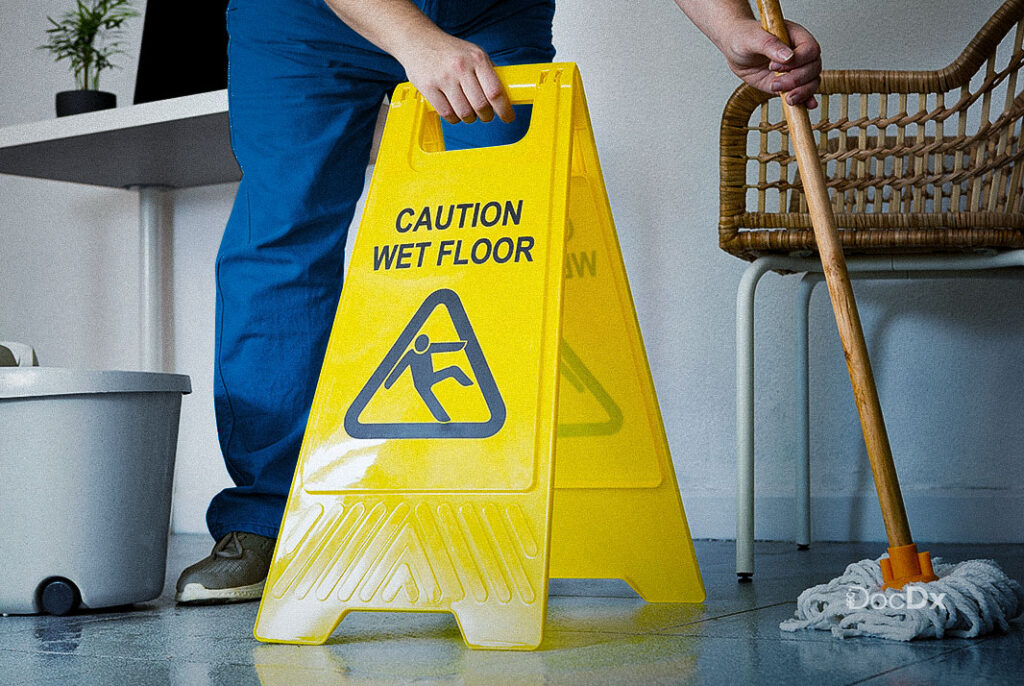Injuries can happen at home and at work, while walking the dog, or even carrying groceries. While there are some accidents that can’t be prevented, there are many that can be avoided with the right approach to health and wellness.
Preventive care, chronic condition management, and support for mobility are especially important for older adults and those at higher risk of falls. By addressing potential risks early—before they lead to an emergency or a trip to urgent care—individuals can maintain their independence and reduce the likelihood of injury.
At DocDx, we focus on prevention as a central aspect of staying healthy and active. Our goal is to support patients in managing their health proactively so they can continue to move with confidence and live independently for as long as possible.
Why Prevention Matters More Than Reaction
In most cases, people do not think about preventive measures until an injury occurs, such as a sprained ankle, or a strained lower back. In fact, waiting to react can lead to increased recovery time, stiffer medical costs, and a higher chance of chronic pain. In contrast to this, primary care focuses on proactive measures. Through regular health checkups integrated with personal health plans, we help identify risk factors early and implement timely changes to help avoid injuries.
Most Common Preventable Injuries
While there’s a wide variety of accidents that can occur, there are certain types of injuries that occur more frequently and are preventable with proactive care.
1. Slips, Trips, and Falls
Loose rugs, poor lighting, cluttered walkways, and uneven surfaces can all lead to dangerous falls, especially for older adults.
2. Muscle Strains and Overuse Injuries
From lifting heavy boxes at work to repetitive movements at a desk, overuse injuries can cause chronic pain if not addressed.
3. Joint-Related Accidents
Weak muscles, poor balance, and limited flexibility can make everyday movements risky—something we see often in patients with arthritis or other chronic conditions.
Fall Risk in Older Adults
Falls are one of the leading causes of injury for people over 65, but many are preventable.
- Changes in balance and strength can make walking less stable.
- Vision changes may make it harder to see obstacles.
- Slower reflexes can reduce the ability to prevent a fall.
Supporting older adults in maintaining independence often involves a combination of fall risk assessments, strength-building activities, and personalized care plans that address mobility and safety.
The Role of Chronic Condition Management in Injury Prevention
Chronic conditions such as arthritis, diabetes, and neuropathy do more than impact inner well-being—they also influence balance, coordination, and overall mobility. These changes can significantly increase the risk of falls or other injuries, particularly in older adults.
Mobility Maintenance as a Lifelong Priority
Our bodies are designed to move, but over time, joint stiffness, muscle weakness, and poor flexibility can set in. Regular stretching, gentle strengthening routines, and balance training can help you maintain mobility well into your later years.
Ergonomics at Home and Work
A safe environment plays a huge role in preventing injuries. Small changes can make a big difference:
- At home: Secure rugs, improve lighting, and keep pathways clear.
- At work: Adjust desk height, use supportive seating, and take regular movement breaks to reduce strain.
Nutrition and Hydration for Injury Prevention
Your diet directly impacts your muscle strength, bone density, and recovery ability. We encourage:
- Calcium and vitamin D for bone health
- Lean protein for muscle repair and strength
- Proper hydration to prevent dizziness and muscle cramps
The Power of Patient Education
Knowledge is one of the best preventive tools. We take time to educate patients on:
- Safe movement techniques to avoid strain
- Warning signs that should prompt early medical attention
- Daily habits that improve stability, balance, and coordination
How DocDx Helps You Stay Injury-Free
While we don’t treat acute injuries, we excel at helping you prevent them through:
- Comprehensive Primary Care – Annual exams, screenings, and health monitoring
- Chronic Care Management – Focused plans for conditions like arthritis, diabetes, and hypertension
- Routine health Checkups – monitor your overall well-being and catch potential issues early, ensuring you’re on track with your health.
When to See a Primary Care Provider before It’s Urgent
Sometimes, small problems turn into big ones when ignored. You should schedule a visit if you notice:
- New or worsening joint pain
- Frequent muscle weakness or fatigue
- Balance issues or dizziness
- Reduced mobility compared to a few months ago
Catching these early allows us to create a plan to address them before they become emergencies.
Next Step Towards Prevention
DocDx offers preventive and chronic care solutions to help you stay healthy, strong, and injury-free. Whether it’s improving your balance, strengthening your muscles, or managing a chronic condition, our team is here to guide you every step of the way.
Final Thoughts
Preventing injuries is about more than just avoiding pain; it’s about protecting your independence, maintaining your mobility, and enjoying life without unnecessary setbacks.
With proactive health care, patient education, and regular checkups, we can help you reduce your risk of injuries, keep you active, and give you the confidence to live life confidently on your terms.




